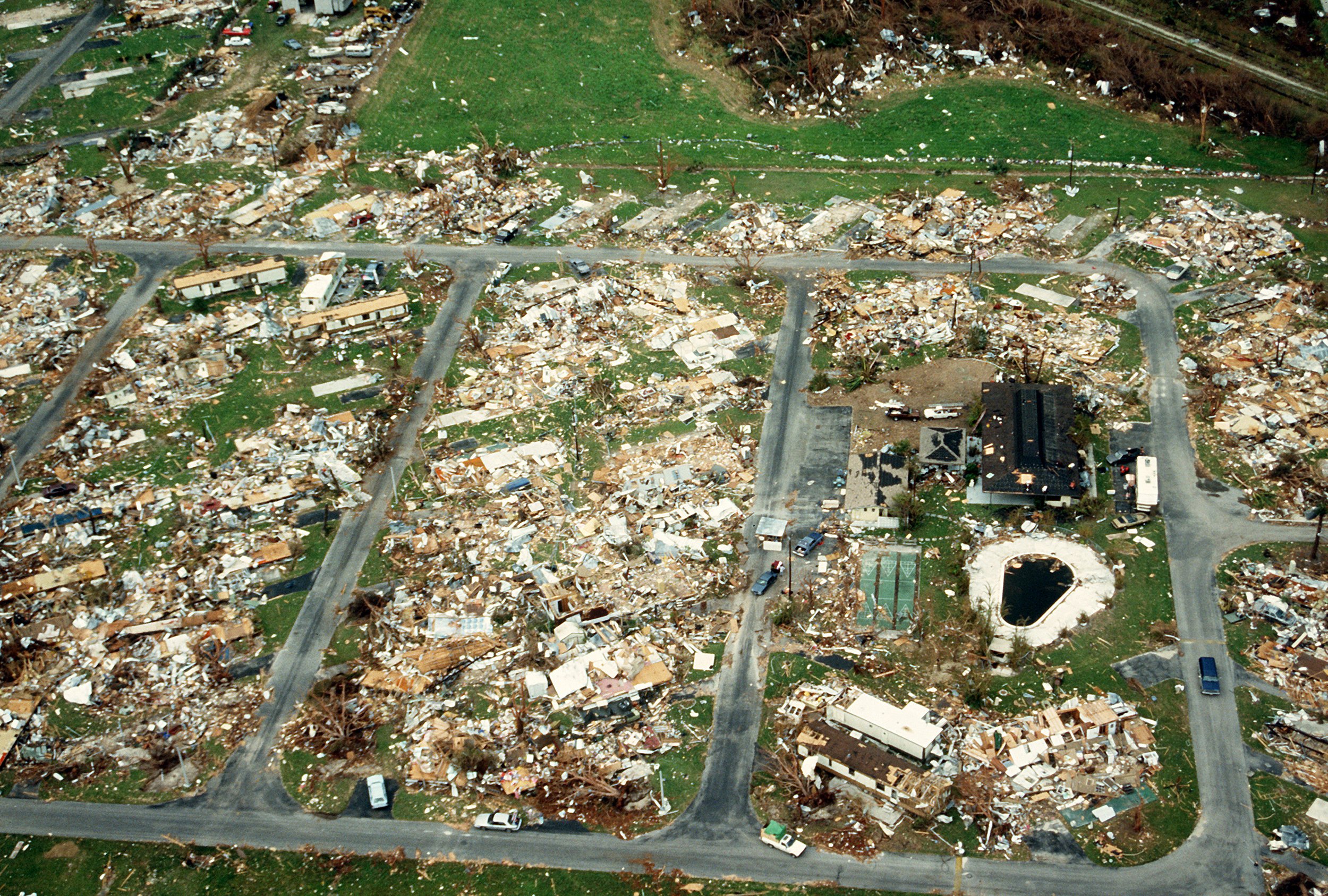Data Viz | Environment | Income, Poverty and the Economy
insurance needs insurance too: reinsurance and cat bonds explained
An aerial view of devastation at Homestead Air Force Base caused by Hurricane Andrew in Florida, 1992. Source: Department of Defense.
by ELISABETH GAWTHROP | Nov. 30, 2022
This week, our colleagues at APMG sister organization Marketplace released a new episode of their podcast How We Survive. This season, the show is examining the livability of South Florida in the face of the climate crisis. APM Research Lab pulled together some charts to add some further context to this week’s reporting on reinsurance and catastrophe bonds.
The ultimate goal of insurance companies: avoid the possibility of having to pay out too many claims in a given year. Hurricanes are one of the major risks most likely to lead to that possibility. After a relatively quiet few years from 2013-2015, weather-related disasters have fueled consistently higher losses in more recent years.
Many insurance companies hedge against catastrophic risk by spreading out where they carry policies. This reduces the chance of having to pay out claims to a large share of their properties at once.
But sometimes that's not enough. In such cases, insurers look to get insurance themselves, called reinsurance. Florida insurance companies are particularly reliant on reinsurance because they tend to be smaller and less diversified. In most years, Florida insurers are paying 45-65% of what they receive in premiums as payments for reinsurance.
Charles Nyce, a professor of risk management and insurance at Florida State University, said that, “this is not necessarily a bad thing given that these reinsurance companies help pay the losses when events do occur.”
To be able to absorb the costs when extreme events happen, reinsurers look to spread their risk among multiple high-risk areas around the world. But with enough catastrophes in all the wrong places at once, reinsurance companies also face the possibility of having to pay too much out at once.
If the Florida insurance situation is so precarious, why won’t Hurricane Ian sink the industry? Find out in How We Survive Episode 5.
As such risks increase, reinsurance rates go up, reinsurers become more selective about the risks they accept, and the market tightens. It's an example of how the impacts of the climate crisis in one part of the globe can have ripple effects everywhere.
In Florida, several of the insurance companies that went insolvent this year had not been able to get reinsurance, citing cost and unavailability. According to a report from Fitch Ratings last week, rates are expected to rise again in 2023, and especially in areas hit by extreme climate events this year, which includes Florida.
Catastrophe bonds are another financial tool insurance companies use to hedge against large losses. A catastrophe bond is issued for a given number of years, and if a disaster does not happen in that time, the investor gets their money back with interest. If a disaster does occur, that money is used to pay for the costs of the disaster and the investor loses everything.
Why would someone invest in a catastrophe bond if they could lose their whole investment? Find out in How We Survive Episode 6.
Typically, the only entities that can invest in these kinds of bonds are large funds; it's a way for them to diversify their risk as well, since disasters like hurricanes are largely independent from other risk factors in the financial markets.
The first catastrophe bond was issued 25 years ago. In the last 14 years, the cumulative amount of capital in the catastrophe bond market has had spurts of extreme growth as well as relatively flat periods, according to data from Guy Carpenter, a reinsurance company.
After two years of multiple destructive hurricanes in the U.S. and Puerto Rico, 2019 saw the value of bond issuances nearly cut in half. In Florida, it was the lowest since 2011. For the last two years there has been some growth, but not at the higher rates seen in the early 2010s.


